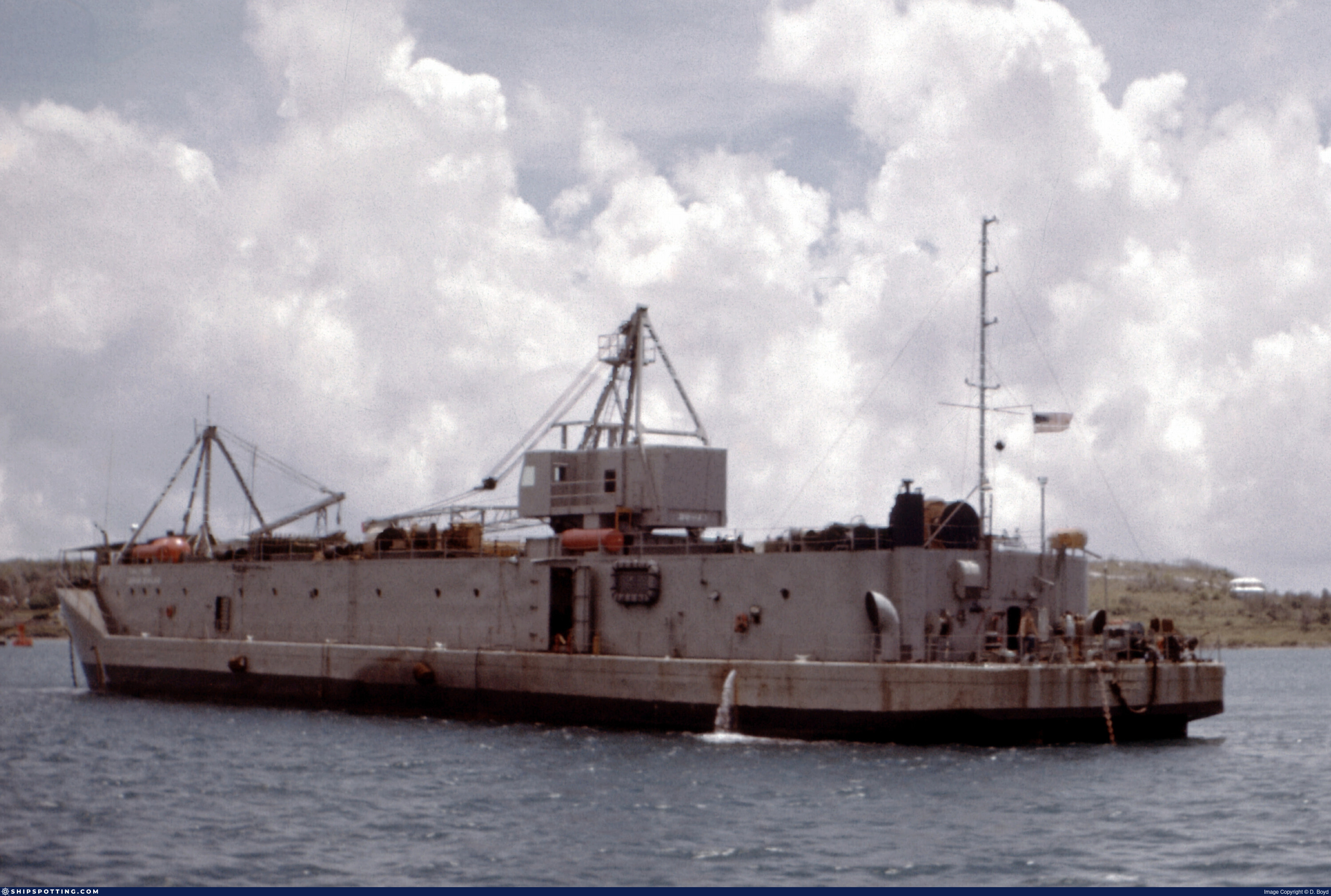
®
SHIPSPOTTING.COM
WELCOME TO SHIPSPOTTING.COM
USN YFNB 12
Photo
details
Photographer:D. Boyd [ View profile ]
Title:Usn Yfnb 12
Photo Category:Service Craft
Added:Sep 19, 2017
Views:2,040
Image Resolution:3,000 x 2,000
Description:
I've gone through my Jane's, Fahey's, Ships and Aircraft and the internet... can't figure what this is nevermind its name. Thanks to those with input to identify.
Photo was taken at Hamilton Harbour, Bermuda about 1958/59.
Scan from slide, color corrected due to poor aging.
This imaged is reversed... reverse for proper view.
See comments.
Vessel
particulars
There is no Ship Data available for this photo!
Would you like to suggest new Ship Data?
Photo
Categories
This ship is not assigned to any other category.
More of
this ship(0)
More of:This Photographer
Got photos of this ship? Upload them now!




COMMENT THIS PHOTO(19)
YRST-2 was constructed in 1941 and as placed in service on 30 December of that year. She was originally designataed as a large covered lighter (YFNB-17), and she saw service in Tsingtao, China, until the end of World War Two when she was mothballed. The grounding of the battleship USS Missouri in Hampton Roads, Virginia, in 1950 pointed out the need for a vessel capable of providing on-scene support for large scale salvage operations, and to fill this need YFNB-17 was reactivated on 31 January 1952 and was equipped with all manner of pumps, generators, compressors, machine shops and associated diving equipment. After numerous modification and two name changes (first to YDT-12, a diving tender, and finally, to YRST-2). The vessel is designed to house 8 officers and 92 enlisted men. The US Navy Salvage Diving School operated out of YRST-2
Edit
comment
Edit
comment
Edit
comment
But I agree that the rest of the name etc still defeats.
We'll get there in the end
Edit
comment
Edit
comment
Edit
comment
http://www.apmadoc.net/Photos/navy/HR_191.html
But cannot find one under her previous designations YFN 736, YFNB 17, YDT 12
Edit
comment
Edit
comment
Edit
comment
I am not sure that the crane would interfere with the derrick, especially if this is only the parking position - it's difficult to judge from this angle. It may be significant that it is in way of the access door.
Edit
comment
Edit
comment
Edit
comment
Edit
comment
Edit
comment
Edit
comment
I have even less on the concrete versions. They, too, would have been built without those portholes into the cargo area. I’ve only found a couple photos of them (other than CEREUM that was completed as a floating machine shop for the Army) so can’t say whether they, too, might have had the forward tripod crane. Sure sorry I can’t help on this one.
Edit
comment
Edit
comment
Edit
comment
Edit
comment